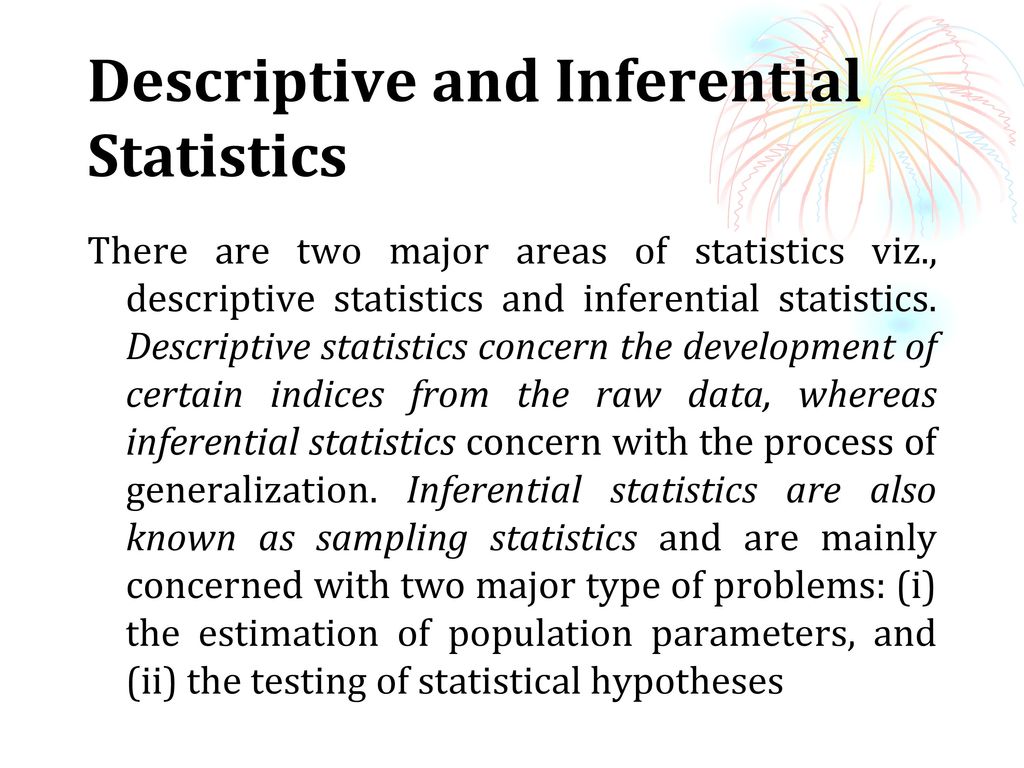Describe the Use of Inferential Statistics in Healthcare
Inferential statistics are often used to compare the differences between the treatment groups. Hypothesis tests confidence intervals and regression analysis.

Descriptive Statistics Vs Inferential Statistics 8 Differences Public Health Notes
Approximately 819 of articles reported an observational study design and 931 of articles were substantively focused.

. Heath care economists Rexford Santerre and Stephen Neun emphasize the importance of statistics in the allocation of scarce medical resources 1. The main purpose of using inferential statistics is to estimate population values. Computer science business healthcare public policy financial policy and much more.
A warning Community health is an increasingly important subject in the curricula of medical students. This method is valuable across many fields including. Describe the main outcomes of the inferential statistical analysis.
Following up with inferential statistics can be an important step toward improving care delivery safety and patient experiences across wider populations. A confidence interval gives a range of values for an unknown parameter of the population by measuring a statistical sample. In public health data are often gathered from separate groups in order to describe health-related behavior for a topic of interest.
Inferential statistics use samples to draw inferences about larger populations. There are two major divisions of inferential statistics. Application of statistical inference techniques in health information management Abstract We have demonstrated that objective comparisons can be made using accepted statistical techniques.
The inferential statistics definition is statistics that are used to draw conclusions or infer about a population based on a sample of. A precise tool for estimating population. Inferential statistics is when you take data from a sample group and make a prediction that impacts the conclusion on a large population.
In practice a larger sample is often surveyed and then focus groups or interviews can be conducted with a smaller subset of the sample. Inferential statistics makes it possible to learn a lot about entire populations by utilizing information gained from a random sample. Inferential statistics are crucial in forming predictions or theories about a population.
With the use of this method of course we expect accurate and precise measurement results and are able to describe the actual conditions. Estimating parameters- this is where you take analysis from your sample data and use it to estimate the population parameter. Inferential statistics are divided into two main areas.
Statistics is an essential component in the ultimate delivery of health care. Inferential Statistics refers to a discipline that provides information and draws the conclusion of a large population from the sample of it. Since its virtually impossible to survey all patients who share certain characteristics Inferential statistics are crucial in forming predictions or theories about a larger group of patients.
The sample data can indicate broader trends across the entire set and such statistics have clear use to todays nurse regarding the rise of population health. This is a type of statistics that focuses on drawing inference or conclusion about the population on analysing and observing a sample. Inferential statistics use statistical models to help you compare your sample data to other samples or to previous research.
Descriptive statistics can help in summarizing data in the form of simple quantitative measures such as percentages or means or in the form of visual summaries such as histograms and box. Results were summarized for statistical methods used in the literature including descriptive and inferential statistics modeling advanced statistical techniques and statistical software used. When we use a specific statistical test eg MannWhitney U-test to compare the mean scores and express it in terms of statistical significance we are talking about inferential statistics.
Use of Statistical Information Statistics as defined by Bennett Briggs and Triola 2003 is the science that helps us understand how to collect organize and interpret numbers or other information data about some topic pg. You can use random sampling to evaluate how different variables can lead to you make. Statistical information is invaluable in determining what combination of goods and services to produce which resources to allocate in producing them and to which populations to offer them.
Most research uses statistical models called the Generalized Linear model and include Students t-tests ANOVA Analysis of Variance regression analysis and various other models. Inferential statistics describe data about the population entirely. It is more applicable for larger data set projects.
The roots of this discipline can be traced to public health and social and preventive medicine. Inferential statistics use measurements from the sample of subjects in the experiment to compare the treatment groups and make generalizations about the larger population of subjects. The use of inferential statistics in health and disease.
Tests of significance or hypothesis testing where scientists make a claim about the. Depending on the question you want to answer about a population you may decide to use one or more of the following methods. We have also shown that you can apply tests which dont meet the basic assumptions and still obtain valid results in most cases.
This is expressed in terms of an interval and the degree of confidence that the parameter is within the interval. In Inferential statistics a sample is done through different forms of sampling.

Inferential Statistics Ppt Download

Inferential Statistics What Are They When Would You Use Them Pdf Free Download

No comments for "Describe the Use of Inferential Statistics in Healthcare"
Post a Comment